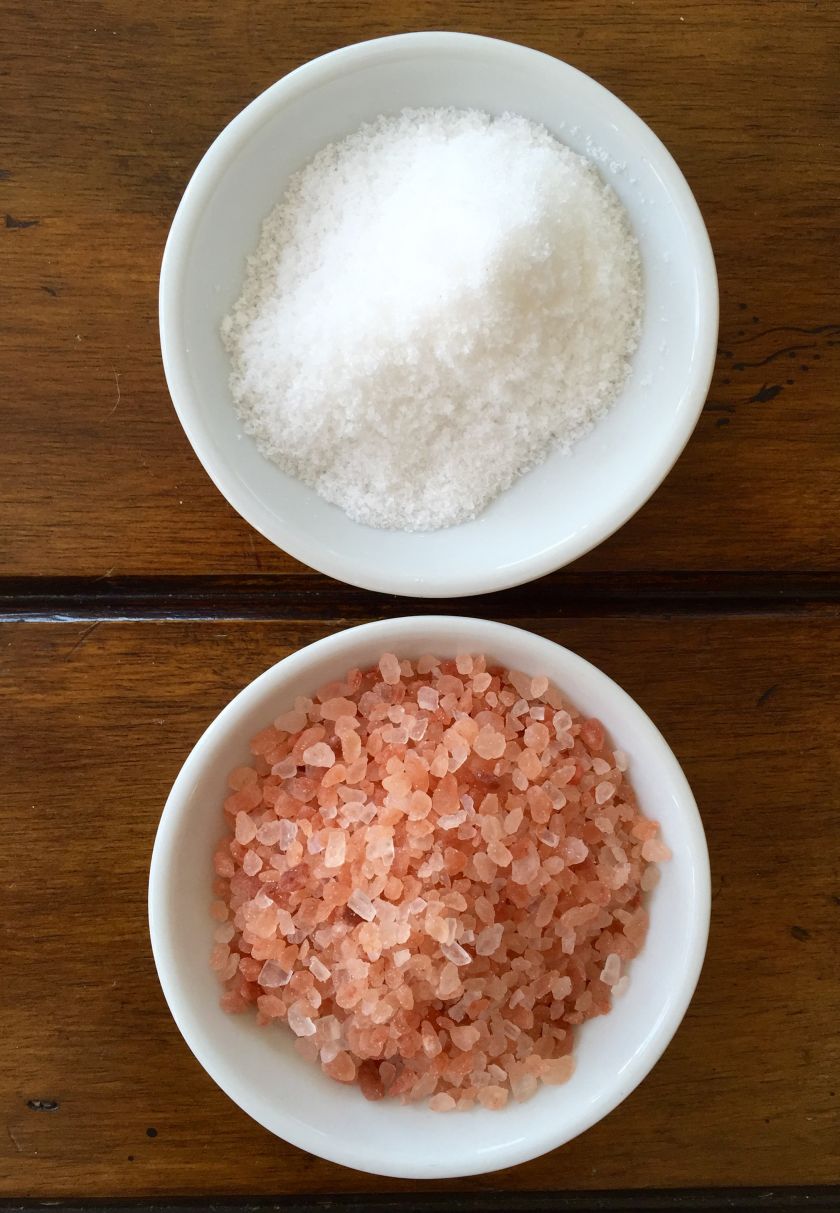The following content was provided by Registered Dietitian, Rachel Gargano.
Himalayan Pink Sea Salt. Bolivian Rose Sea Salt. Dead Sea Salt. Celtic Sea Salt. Hawaiian Alaea Sea Salt. Organic and Natural Sea Salt.
Sea Salts are marketed to us as a more natural and healthy alternative. But are they any different than table salt?
Yes and No.
What is Sea Salt, anyway?
Sea Salt is produced through evaporation of seawater. Depending on the region, the seawater imparts trace minerals and elements in the salt, giving it a distinct color and texture.
For example, Himalayan Pink Sea Salt typically contains a bit of iron oxide, which gives it a pinkish huge. Hawaiian Alaea Sea Salt gets it’s brownish-pink color from a Hawaiian clay called ‘alaea, which again is rich in iron oxide. Black Sea Salt actually has activated charcoal added to it primarily for the visual effects.
But aren’t the minerals and trace elements in these salts good for me?
Unfortunately, only less than 2% of most sea salts contains minerals and trace elements. Which means that if we’re only supposed to consume 1 teaspoon of salt total per day (which equals about 2,300 mg), you’d have to eat around a quarter of a cup of sea salt a day to get enough of the trace elements to make an impact on your health.
Ooph. Talk about high blood pressure!
The other 98% of sea salt is made of NaCl, or sodium chloride. Which is chemically identical to table salt.
Myth: Sea Salt does not have less sodium than table salt. Gram for gram, sea salt has the same amount of sodium as table salt. However, because the salt crystals are bigger, less of it can fit in a teaspoon. So per teaspoon, sea salt has less sodium.
(This is similar to whipped butter. It’s still plain ol’ butter, but since there’s more air, less butter fits in a teaspoon – and therefore less calories).
** A Note on Purity: Sea Salts are in the lime light as being healthful, but the fact is that they can contain pollutants. Years ago the seas may have been relatively clean, but nowadays they’re increasingly dirty from oil spills, water traffic, garbage, and other pollutants. Because sea salt is harvested on coastlines, potential pollution from the land is also a concern. Be sure to read the label carefully to ensure that you’re getting what you want.
Table Salt Basics
Table salt is mined from either underground salt deposits (from old seas), or from dried salt lake, such as out in Utah. Table salt a bit more processed to eliminate extra minerals and usually contains an additive to help prevent clumping of the small crystals.
Most table salt also has added iodine. In 1924, manufacturers began adding this mineral to salt because iodine deficiency was once a persistent problem in some parts of the United States. Currently, the majority or Americans no longer suffer from this deficiency, however, it continues to be a serious problem in Africa and some parts of Asia.
One last difference:
Sea salt is much higher in price than table salt.
Verdict:
Using sea salt over table salt is a matter of preference, not healthfulness.
Adding salt while cooking can enhance the flavors, making them more well-rounded and adding depth and complexity. But be aware that you may only need a pinch to jazz up your meal. Consuming too much during the day may lead to high blood pressure, so experiment with herbs, spices, and citrus zest to help add a delicious zing to your food.
~ Rachel G















Comments